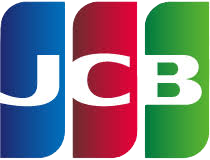KILIMANJARO CLIMBING COSTS
The average cost to climb Kilimanjaro is $2000 to $6000, the price varies from cheap, budget operators to large Western travel agents selling outsourced climbs at an inflated price. There are various, unavoidable fixed costs to any tour operator and if a climb seems too cheap, you’ve got to ask yourself why.
Where are they making ‘savings’ (read: compromises) and what impact might this have on your safety and comfort on the mountain? What about your crew? Staff expenses are the main way that cheap operators cut costs, by not paying a proper wage, and providing little (or no) equipment and gear. This won’t make for a happy team and gives rise to welfare issues
All tour operators on Kilimanjaro need to be licensed and registered by KINAPA, the National Parks Authority. However, travel agents worldwide can sell treks up Kilimanjaro that they outsource to local operators.
Ready to start planning your journey?
Our travel experts are ready to start creating your dream African adventure.
Factors affects the cost of a Kilimanjaro expedition
The more people that are in a trekking party, the lower the cost per person. Climbs that have only one or two climbers will have the highest prices as the costs to operate are shared by a small number of people. Not surprisingly, climbs with a dozen or more people will have much lower prices. Most companies, including Ephraim’s Guide Safari , run open climbs where customers may book a spot to join to form a group.
Each day spent on the mountain incurs additional costs in park fees, staff wages, food, and equipment use. Thus, longer routes are more expensive than shorter routes. Route selection also plays a part as some require more personnel, gear and logistical arrangements.
Kilimanjaro operators can be categorized into three broad price ranges: budget, mid-range and luxury.
This is the main driver of the huge price disparity between different companies for what seems like the same service. The typical consumer has a hard time differentiating between operators because a company’s website doesn’t tell the whole story.
Ephraim’s Guide Safari is a mid-range operator offering high quality climbs at a reasonable cost.
We believe that luxury operators make you pay for things you don’t want and don’t need. On the other hand, budget operators cut corners in areas that are critical to your experience, including safety.


OUR FACEBOOK PAGE
CONTACT INFO
- P.O.Box 399 Usa River, Arusha
Payment Method






